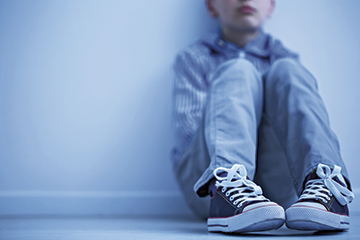By Amy Metcalfe
Are our kids alright? A recent report from the O’Brien Institute for Public Health at the University of Calgary and Children First Canada suggests that Canadian kids might not be doing as well as we think they are. Canada consistently ranks poorly compared to other developed countries when comparing child health statistics. Children First Canada has recently called for the implementation of a Canadian Children’s Charter and the establishment of an independent national commission for children and youth to advocate for children’s rights within the federal government. Similar Children’s Charters have been established in multiple countries internationally to establish national goals for child health and well-being, engage key stakeholders, and develop an action plan to ensure each child is able to reach his or her full potential.
Most comparative statistics of child health status focus on physical health outcomes, yet injury and suicide are the two leading causes of death amongst Canadian children and youth. Canada has one of the highest teenage suicide rates internationally, with an estimated teenage suicide rate of >10 suicides per 100,000 teenagers. Alarmingly, suicide rates for First Nations youth are five to seven times higher, and suicide rates for Inuit youth are 11 times higher, than for non-Aboriginal youth in Canada. Suicide is just the tip of the iceberg, hospitalizations for self-harm have increased 90 per cent between 2009 and 2014, and 14 per cent of children and youth have reported having had suicidal thoughts at some point in time. Individuals who contemplate or commit suicide often struggle with mental health issues, and up to one in five children may develop a mental health disorder, but sadly only 20 per cent of them are able to access appropriate treatment for mental health problems. Between 2007/08 and 2016/17 there has been a 66 per cent increase in emergency department visits and a 55 per cent increase in hospitalizations for mental health issues. Forty-six per cent of in-hospital days for children and youth in 2013-2014 were attributed to treatment of mental health concerns.
Mental health concerns are increasingly being recognized in younger children. Children aged 10-14 and 15-17 had the largest increases in emergency department visits and hospitalization for mental health issues. While early identification and treatment of mental health concerns is important, the rising incidence of mental health concerns in a younger population has larger implications at a population level as data from the National Longitudinal Survey of Children and Youth in Canada shows that emotional difficulties between the ages of 10-14 years is strongly associated with depression in later teenage years and early adulthood.
Sport-related brain injuries continue to impact thousands of Canadians
A multi-faceted approach to treatment of mental health disorders in youth is recommended that may include psychosocial therapy and prescription medication use, and utilization of both psychosocial therapy and psychotropic medication youth have both increased in recent years. However, many children and youth face barriers to accessing mental health care in a timely fashion. Difficulties accessing mental health services is at least partially attributable to public health insurance in Canada which primarily covers services provided by physicians or in hospitals. This means that approximately seven per cent of public spending on health in Canada is directed to mental health, compared to up to 18 per cent in other developed countries. Lack of access to mental health services has been identified as a priority area for investment for the federal government, with $5 billion being transferred to provincial and territorial governments over a ten year period address this gap. While this $500 million annual investment marks an important first step in improving access to mental health care, there is presently an estimated annual $3.1 billion gap in mental health funding that this investment alone will not be able to address. How these investments will be operationalized in each province and territory still remains to be seen. Access to care is only one element that needs to be considered, lack of service integration and coordination of care is frequently reported as a barrier by families, and the transition between pediatric to adult services has been identified as a particularly sensitive time point. Children and youth have many unique health care needs that may not be adequately addressed by the adult system. The Canadian Institutes of Health Research has recently issued a targeted call for research on best practices associated with transitions in care.
Most kids in Canada grow up healthy and safe. However, these data show us that there’s still considerable room for improvement. Poor mental health outcomes and lack of access to treatment are important areas for intervention. Canadian children have identified mental health as one of their top concerns, and recent federal investments in mental health may improve access; however, consistent advocacy on behalf of Canadian children and youth is essential to ensure that they have every opportunity to reach their full potential.
Amy Metcalfe, PhD is Assistant Professor, Departments of Obstetrics & Gynecology, Medicine, and Community Health Sciences University of Calgary Foothills Medical Centre.


